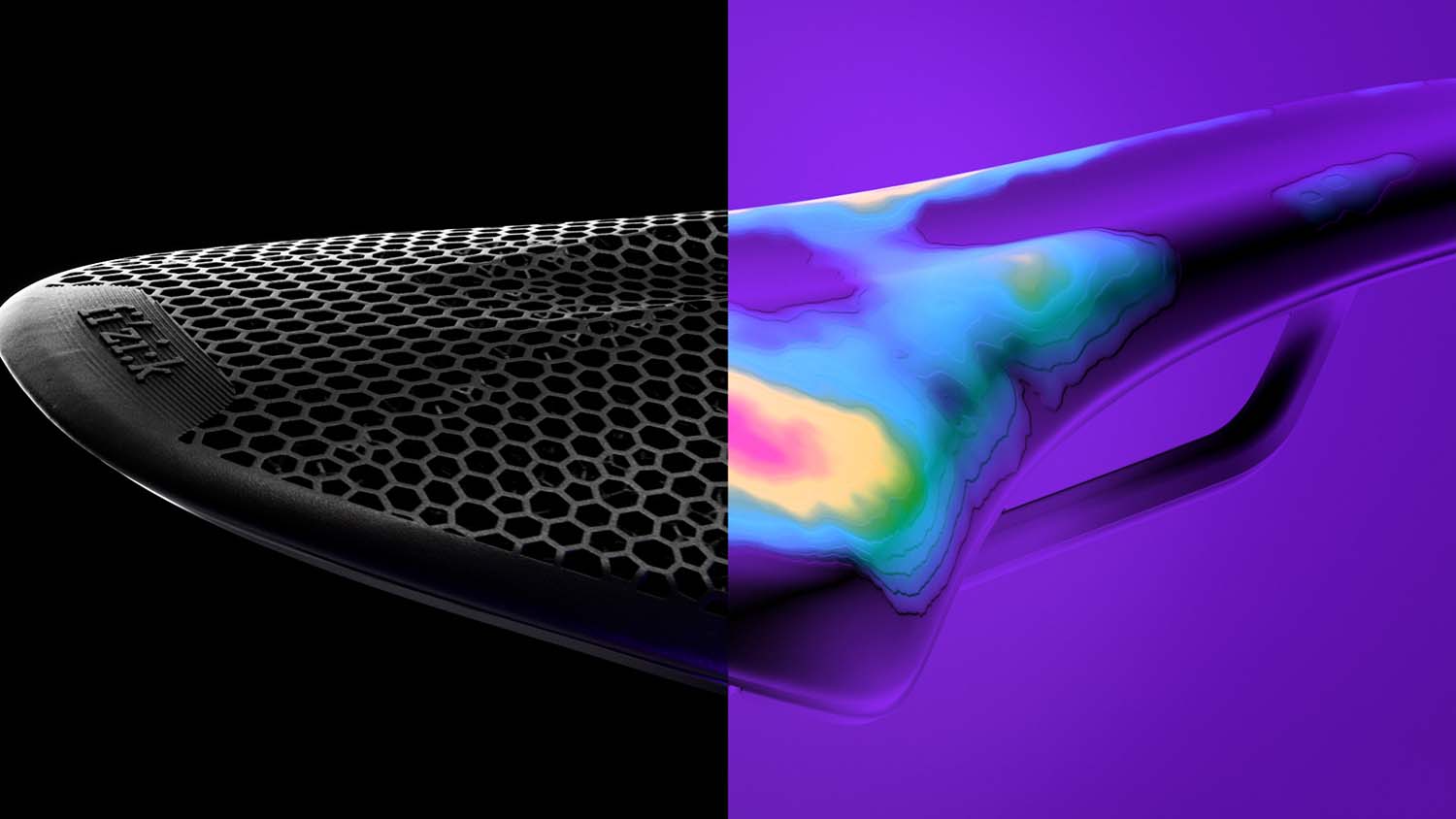Cycling brand Fizik is looking to take its advanced bike saddles to the next level by combining accurate pressure sensor data with automated lattice generation and 3D printing
To create a truly custom saddle, a rider’s pressure data must be captured, including the body force transferred to the saddle as well as how that force is distributed across the saddle’s surface – with the pressure changing continuously while riding as the rider pedals and shifts riding positions.
It’s crucial to capture pressure measurements dynamically while the cyclist is in motion and over time.
To capture such data, Italian cycling brand Fizik has worked with German cycling ergonomics experts GebioMized to develop a pressure sensor mat capable of measuring pressure at 64 points spread out across a bike saddle’s surface, relaying data in real-time wirelessly.
The mat is applied on a saddle and the cyclist is positioned on it in their normal riding style. This allows GebioMized’s software to capture pressure distribution when static or dynamic and in a variety of seating and handlebar positions.
Unlike traditional tools that aim to measure sit bone distance or sacrum angle, measuring pressure while riding reflects the real sitting position on the bike and allows Fizik to identify the parameters that matter most, like indicators of stability on the saddle, peak pressure identifiers and hotspots, and pelvic tilt.
As part of Fizik’s One-to-One offering, riders can be measured and assessed on their own bikes at select retailers, with a trained bike fitter guiding the session using a dedicated mobile app. Relevant information about the rider’s current bike setup and saddle position is gathered through a simple questionnaire, then pressure data is captured on the rider’s current bike and saddle setup in all relevant riding positions.
The results are displayed in a pressure chart showing the mean pressure across the saddle, the front and rear and left and right saddle pressure comparisons, the maximum pressure values and their locations on the saddle, the centre of movement and pelvic tracking pattern, and the gross angle of pelvic hemisphere alignment.
Having matched the rider with the ideal saddle shape, chosen for the load type and riding style, the measurements on the selected saddle shape are used as a baseline to create the custom 3D-printed padding structure that adapts to load pattern, compensating asymmetries and hotspots, and addressing instability.
Fizik uses a program powered by Carbon’s Design Engine latticing software to translate the pressure data into parameters for the seat structure. Built from an elastomeric lattice, the design forms the saddle’s topper.
The designers are able to dynamically fine-tuning the lattice to produce distinctive cushioning – thicker struts for denser zones that offer more support, and thinner struts allowing more open zones for more comfort and compression.
Once generated, the saddle toppers are produced using Carbon 3D printers via a fully automated workflow. Once printed and post processed, the saddle topper is assembled with the other saddle components by technicians at Fizik, ensuring the highest-quality saddle for the most demanding riders.
“We know that a good, accurate fit depends on many factors: bike geometry, intended use, saddle shape, and position. But most importantly every cyclist is unique: experience, sensitivity, history of injuries, body shape, riding goals. All of this can affect the way we sit on the saddle,” says Fizik brand manager Giovanni Fogal. “It’s clear that a traditional one-to-many saddle design can only provide an approximate solution to very specific problems.
“With One-to-One today we achieve what every saddle manufacturer has always dreamed of: bringing to life customised support available to every cyclist.”










